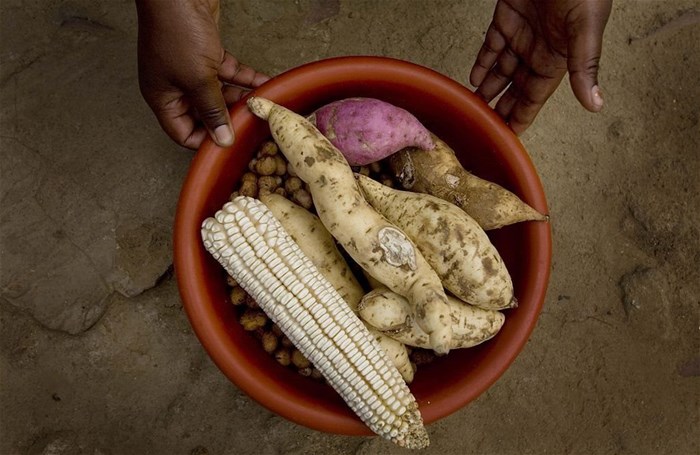According to the regional food security body, the IPC, 11.8 million South Africans faced crisis levels of food insecurity last year. The main drivers for this were Covid-19, economic decline, drought, and high food prices. A regional executive at Sanlam, Gert Bezuidenhout says: “Having worked very closely with our local farmers over this period, one of the things we have noticed people are struggling with is the ongoing uncertainty. Covid-19 is still with us, and we don’t know if there will be new variants. That makes it very difficult for farmers to mitigate against risk.”
With the 2022 harvest season in full swing, local farmers are going to face some significant challenges to keep the nation’s breadbasket well stocked. These are just a few of them:
Climate Change
There are few things that will have a bigger impact on South Africa’s ability to keep food on the proverbial table than environmental issues. Parts of the country continue to experience one of the worst droughts in recorded history and there have been reports of locusts swarming in the Karoo. These events and others connected to climate change are difficult to predict but devastating when they occur. This puts local farmers in between a rock and a hard place when it comes to trying to manage and proactively mitigate risk.
“Look at the flooding in the central interior of the country or the locust outbreaks devastating the Karoo. All these things are going to have an impact on crop production this year. Climate change brings uncertainty; I don’t think we have been able to accurately forecast and understand its effects for people on the ground yet,” says Bezuidenhout.
Anticipating and dealing with the risk of natural disasters will become increasingly important for farmers. Insurance will also continue to play a critical role in risk transfer.
Urbanisation:
It is estimated that by 2050, 80% of South Africans will live in cities. As it stands, a report by the Parliamentary Monitoring Group found that 63% of us already live in urban areas and that number will grow to 7 in 10 people in the next 8 years. While that is great news for those who are eager to eke out a living in a new environment, it is leaving farms with a growing staffing problem.
“The majority of our farming businesses are family-owned and the younger members of those families do not necessarily want to go back to rural areas. That potentially creates a threat to our food security if we can’t find people to go back,” says Bezuidenhout.
According to Bezuidenhout a big reason behind why many don’t go back to help manage farms is down to inadequate succession planning.
“We are not just talking about designating who gets the farm in the will. Succession planning is a long-term endeavour that should include financial planning and allow people to exit the business and others to enter it, with a strong focus on grooming and mentorship. That way, you avoid a situation where the owner of a farm is in a care facility, for example, and that person’s descendant is left to run the farm but unable to make any major decisions about it,” he explains.
In essence, emerging farmers require a sense of ownership and control in what happens to a farm. That will help prevent the rural brain drain.
Systemic pressures:
In the coming weeks, the petrol price is set to increase and in April the price of electricity may increase by 20.5%. Combine this with South Africa’s
poor state of infrastructure and one begins to see the size of the task that local farmers have in getting their products to market at reasonable prices. What’s more, the agricultural industry is in direct competition with other major economic interests.
“Relatively speaking, South Africa is pretty small, so we have limited resources. That means that there is a lot of competition between mining and agriculture for resources such as water. Our road infrastructure is in a bad state and doesn’t hold up well when we get heavy rain and there are vaccine shortages at Ondesterport where our main veterinary centre is. All of these are risks that are very difficult for farmers and the agricultural sector to contend with,” says Bezuidenhout.
Where to from here?
When you combine these things, it is easy to get the idea that South Africa’s food security challenges are insurmountable but according to Bezuidenhout, it is just the opposite. All you need is some good planning and a little bit of help.
“Sanlam, for example, provides a lot of informational assistance to organised agriculture. Because of the size of our footprint, we have tailor-made solutions for just about any kind of operation. In fact, you can usually find us in almost any small town you come across – or at least someone with a Sanlam contact,” he says.
“Over the past few years, we have sponsored R3m to support farmers in drought-stricken areas and our foundation has given around R5m to the Vumelana Advisory Fund, which is a non-profit organisation that helps communities with land to make it more profitable. We are here to help farms across the length and breadth of the country to navigate a complex emerging risk landscape through proactive risk mitigation and a partnership approach,” concludes Bezuidenhout.



